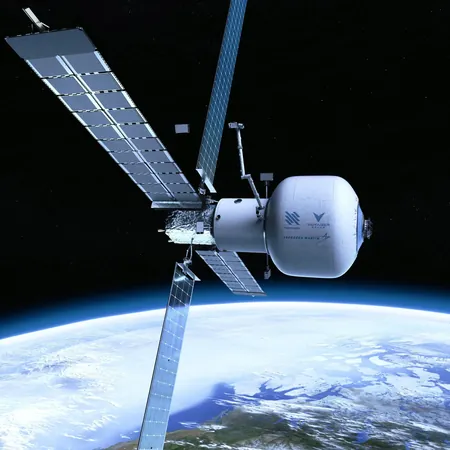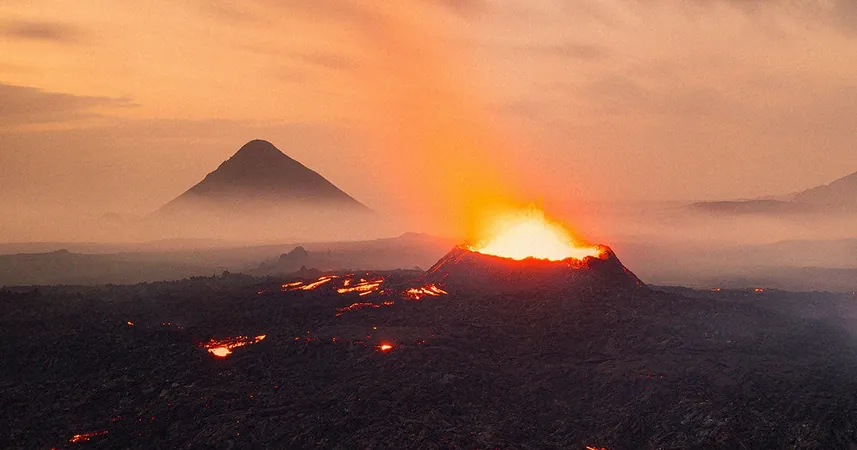
The Dawn of Private Space Stations: Are We Ready for the Next Galactic Adventure?
2024-11-06
Author: Li
As we approach a pivotal moment in space exploration, the era of the International Space Station (ISS) is on the brink of conclusion. NASA is preparing to execute a controlled deorbit of the ISS, paving the way for a new age of private space ventures. While the Chinese Tiangong space station continues to operate, it’s evident that the need for a continuous human presence in low Earth orbit is paramount. Multiple private companies are stepping up to fill the impending void left by the ISS, marking a monumental shift from past government-operated stations like Skylab and the ISS. Let’s take a closer look at these trailblazers in the burgeoning industry of commercial space stations.
Vast: The Gateway to Space Exploration
Based in Long Beach, California, Vast is at the forefront of this innovation, thanks, in part, to a strategic partnership with Elon Musk’s SpaceX. Their flagship project, Haven, is designed to be launched into orbit by a single Falcon 9 rocket, reminiscent of early Russian Salyut space stations. After reaching orbit, a Crew Dragon spacecraft could transport astronauts for stays of up to 30 days. Approximately targeting both space tourists and researchers, Haven offers features like Wi-Fi powered by SpaceX’s Starlink satellites and spacious observation windows. Excitingly, the station also has the potential to generate artificial gravity through rotation. Vast anticipates launching Haven as early as 2025, with aspirations for a larger facility, Haven-2, featuring multiple modules and advanced capabilities.
Blue Origin: The Next Orbiting Frontier
Never one to be outdone, Blue Origin, founded by Jeff Bezos, is developing its ambitious space station named Orbital Reef. Benefiting from a $130 million NASA contract, Blue Origin is eyeing a multi-module facility that combines workspaces for researchers with leisure areas for tourists. The station will utilize the New Glenn heavy-lift rocket for deployment and will include innovative inflatable modules to maximize volume while minimizing launch weight. The collaboration with Sierra Space will see additional spacecraft like the Dream Chaser docking with Orbital Reef. Details on the station’s final layout remain under wraps, but the imaginative designs promise flexibility and dynamism in orbital habitats.
Axiom: The Commercial Pioneers Taking Over the ISS
Axiom, with its roots in Houston, has successfully organized several private missions to the ISS, proving their capabilities in the sector. They are developing Axiom Station, a commercial module designed to integrate with the ISS, and potentially evolve into an independent space station post-ISS era. With substantial funding from NASA, Axiom is constructing this module in Italy, exploring additional attachments that may lead to a comprehensive private station networking system. Their plans are ambitious and indicative of a strong readiness to transition towards a self-sufficient space presence.
Lockheed Martin: Building the Future with Starlab
Lockheed Martin, in collaboration with Nanoracks and Voyager Space, is making significant strides with its Starlab project. Currently in development, Starlab is envisioned as a two-module space station featuring a service module for power and propulsion alongside a habitation module where astronauts will live and conduct research. Promised to be launched aboard SpaceX's Starship vehicle, Starlab is designed to cater to various scientific missions, thereby emphasizing the versatility that commercial space stations are expected to provide.
What Lies Ahead?
With these ambitious developments in commercial space stations, one cannot help but envision a future reminiscent of Stanley Kubrick’s *2001: A Space Odyssey*, where space travel becomes commonplace, and a plethora of private spacecraft dot the cosmic canvas. As these private entities inch closer to operational reality, the potential to revolutionize space travel is tangible and imminent. The integration of private astronauts, scientific research, and tourism will create an exciting landscape for human exploration beyond our blue planet.
As we stand at the threshold of this new era, the question arises: Are we prepared for the floodgates that could open with a thriving commercial space industry? The race is on, and the countdown has begun! Stay tuned as we inch closer to a reality where the stars are not just distant specks; they may soon become your next vacation destination!



 Brasil (PT)
Brasil (PT)
 Canada (EN)
Canada (EN)
 Chile (ES)
Chile (ES)
 Česko (CS)
Česko (CS)
 대한민국 (KO)
대한민국 (KO)
 España (ES)
España (ES)
 France (FR)
France (FR)
 Hong Kong (EN)
Hong Kong (EN)
 Italia (IT)
Italia (IT)
 日本 (JA)
日本 (JA)
 Magyarország (HU)
Magyarország (HU)
 Norge (NO)
Norge (NO)
 Polska (PL)
Polska (PL)
 Schweiz (DE)
Schweiz (DE)
 Singapore (EN)
Singapore (EN)
 Sverige (SV)
Sverige (SV)
 Suomi (FI)
Suomi (FI)
 Türkiye (TR)
Türkiye (TR)
 الإمارات العربية المتحدة (AR)
الإمارات العربية المتحدة (AR)